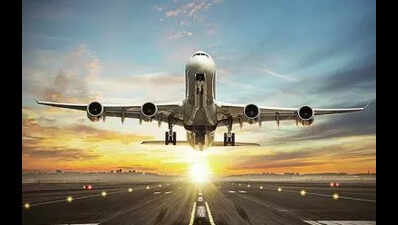- News
- Indian aviation faces hurdles of import dependence and talent shortage amid rapid growth
Indian aviation faces hurdles of import dependence and talent shortage amid rapid growth
Bengaluru: India's aviation industry is on the runway for rapid expansion, but experts warn it's flying with two engines down: overdependence on imports and a shortage of skilled talent. At a time when domestic carriers are placing record aircraft orders and air traffic is set to surge, 98% of aviation components are still sourced from abroad, said industry experts.
At the international conference on the future of aviation and aerospace, hosted by the Indian Institute of Management Bangalore (IIMB) Saturday, experts talked about the challenges faced by the industry despite the promising future. "India has around 700 commercial aircraft in operation. That's less than what a single US airline like American or Delta flies," said Sunil Bhaskaran, CEO of AirAsia India. "Yet we're sitting on an order book of 1,700 aircraft. Passenger volumes are expected to grow from 200 million today to 1.3 billion in two decades. The ecosystem must scale accordingly."
But India's aviation ecosystem is still heavily import-driven. Almost 98% of raw materials and components are sourced from abroad, highlighted Dwarakanath, director general of the Aerospace India Association. "Even as global supply chains diversify, India's share in commercial aviation exports remains below 1%. We should move to 10% of the global supply chain, from less than $2 billion to $20 billion exports. And our value add should move from less than 30% to greater than 60%, including indigenisation of raw materials," he added.
Kushal Jadia, CTO of Cyient, told TOI that the industry's value addition is still based on labour and cost arbitrage. "Until we start designing, certifying, and manufacturing parts ourselves, we won't be truly a domestic aviation leader. Right now, we're not building planes, we're assembling them."
The demand for pilots, drone operators, and aviation systems experts too is growing rapidly. "We'll need more than 10,000 new pilots by 2030," said S Raghunath, professor, IIMB. "And where's the talent for managing drone traffic, optimising flight routes, or ensuring aviation safety systems?"
Quote
Rishikesha T Krishnan, director, IIMB
The sector must take human capital more seriously, not just in numbers but in quality and well-being. Safety in aviation can't be taken for granted. That applies as much to aircraft as to the people working in the sector.
End of Article
Follow Us On Social Media










